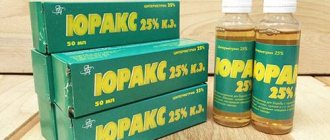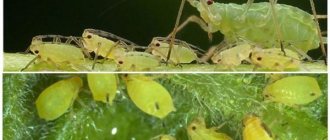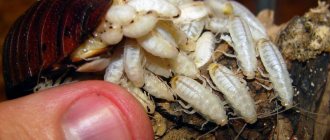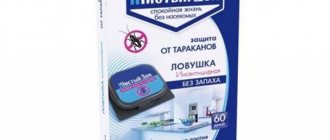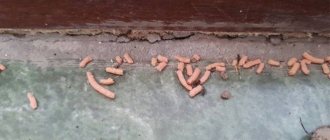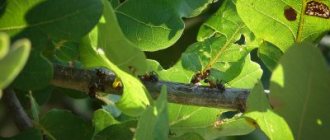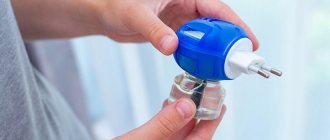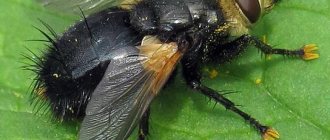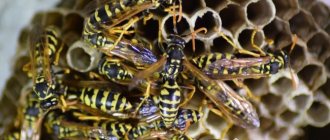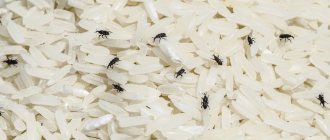Perhaps most people love to welcome guests. But if these guests are some arthropods who decide to have breakfast with you, this definitely causes a storm of negative emotions! Unfortunately, insect infestations are a fairly common occurrence in the homes of many people, who are forced to constantly fight them. It is worth noting that humanity has been trying to destroy insects for thousands of years, either yielding to them or winning an unexpected victory. A huge number of chemical, biological and technical means have been created, the main task of which is to effectively combat insects.
Today, this industry is actively developing, as the demand for goods is growing, and with it, serious competition among manufacturers. In modern conditions, anyone can find a variety of means to rid their home of unpleasant arthropod guests. What are the methods of pest control? And for what?
Why is it necessary to exterminate insects?
As usual, people who have already learned all the “delights” of close proximity to pests do not ask such questions - peaceful coexistence between humans and parasitic insects is impossible in principle. On their paws, insects can carry dangerous infections; they harm things and products, brazenly bite people, causing scratches, abrasions and allergic reactions on the skin. Is it worth mentioning the aesthetic unattractiveness of the very fact of the presence of insects in the house?
Unfortunately, it is almost impossible to insure against their occurrence. They enter houses on shoes, clothes, belongings, through ventilation or sewer openings, through windows and doors, and also simply by moving from a neighboring apartment. Actually, in order to avoid the occurrence of the latter cases, experts recommend treating the premises together with neighbors, otherwise the insects will continue their journey between apartments.
The genocide of insects, carried out on the scale of a house or apartment, is a forced protective measure, the need for which neither Greenpeace nor Buddhists will deny.
The procedure for disinfestation at various facilities
Pest control is not only the destruction of insects, as many believe, but also the implementation of a whole range of preventive measures aimed at reducing and eliminating infectious and parasitic diseases.
For correct and rational planning of insect extermination measures, it is necessary to know the breeding places and concentrations of arthropods at different stages of their development, the degree of connection with humans of individual insect species, the dynamics of their numbers, the influence of regulatory factors (natural, anthropogenic), the mechanism of action of certain groups of insecticidal preparations and the possibility of the emergence of stable populations, the rate of restoration of populations of different insect species after exposure to biocidal agents, and much more.
Disinsection includes a set of chemical, biological and mechanical control measures aimed not only at destruction, but also at preventing the appearance of pests.
ROLE OF ARTHROPODS IN THE EPIDEMIOLOGY OF INFECTIOUS DISEASES
The term disinfestation was first proposed in 1909 by bacteriologist Nikolai Fedorovich Gamaleya to refer to measures to destroy insects that carry infectious diseases.
Arthropods are the most numerous type of invertebrate order. Among them there are both beneficial and harmful species - insects and ticks damage crops, gardens, food supplies, clothing, furniture, homes, and are also carriers of pathogens of various diseases. The harm caused by arthropods to human health is not limited to spoilage of food supplies and the transfer of pathogens of infectious diseases. Some of the arthropods that live near humans deprive them of peaceful rest (bugs, fleas, mosquitoes). Some create or indicate an unsanitary environment in a home, office or enterprise (cockroaches, flies). In this regard, all types of arthropods that in one form or another cause harm to humans are included in the scope of medical disinsection. The variety of conditions in which the harmful effects of arthropods occur determines their ecological and biological characteristics and requires a differentiated approach to disinfestation measures.
The following orders are of epidemiological and sanitary-hygienic importance: fleas, lice, cockroaches, bedbugs, ants, ticks, mosquitoes and flies.
In the body of a specific carrier, the pathogen goes through a certain development cycle (plasmodia of malaria in the body of a mosquito, leishmania in mosquitoes) or only multiplies (the causative agent of plague in fleas, encephalitis virus in ticks). In mechanical carriers, pathogens are located on the surface of the body, in the proboscis, and intestines (flies, horseflies, cockroaches). Transfer of the pathogen in such cases is usually possible for a short period of time, as long as it remains viable. In some cases, the same species of arthropod can be a specific and mechanical carrier of certain pathogens.
TYPES OF DISINSECTION
The epidemiological and epizootological focus of measures to exterminate arthropods determines the feasibility of identifying focal and preventive disinsection.
Focal disinsection, in turn, is divided into current disinsection and final disinsection.
Current focal disinfestation involves extermination of vectors both at the source itself and in its surroundings. It is of greatest importance for such anthroponoses as typhus and relapsing fever, as well as for malaria and pappataci fever. As previous experience has shown, careful implementation of ongoing disinsection for these diseases completely eliminates the possibility of new infections appearing around the patient.
Final focal disinsection is an important measure in eliminating foci of typhus and relapsing typhus. However, it should be noted that its epidemiological effectiveness depends on the timely determination of the size of the outbreak, as well as on the quality of work to exterminate lice. Currently, due to the elimination of relapsing fever and the registration of isolated cases of typhus, it has limited significance.
Preventive disinfestation is one of the main measures to prevent human disease in natural enzootic foci. In particular, widespread mosquito eradication measures were of exceptional importance in the fight against malaria.
Disinsection is also distinguished between medical, veterinary and agricultural.
METHODS OF DISINSECTION
The diversity of biological characteristics of individual arthropod species, as well as the conditions of their existence, requires the use of a wide variety of methods to combat them. Depending on the nature of the reagents used, three disinfestation methods are distinguished:
- physical,
- chemical,
- biological.
PHYSICAL DISINSECTION METHOD
The physical method of disinfestation is carried out through the use of mechanical means and high temperatures.
Among the mechanical means, it should be noted the usual techniques used in cleaning rooms and individual objects (vacuum cleaner, shaking out, knocking out), the use of various traps, sticky paper, nets on windows and doors. Mechanical means of disinfestation are of secondary importance both in terms of effectiveness and in terms of the object of their use and can only be considered as an addition to chemical methods.
Exposure to high temperatures. As is known, the body temperature of arthropods, which have practically no ability to thermoregulate, depends on the ambient temperature. Each species of arthropod has its own specific temperature optimum, which is the most favorable for its life activity. Changing the temperature above or below the optimum affects metabolic processes. Under the influence of high temperatures, sharp irreversible changes occur in the body of arthropods (primarily the coagulation of proteins), leading to their death.
Fire, hot water, dry hot air, moist hot air, and water vapor are used as disinfestation agents. Fire is used only in the fight against certain species of arthropods under certain conditions. Hot water is used to kill lice and nits in laundry by boiling. In boiling water, lice and nits die within a few seconds. Dry hot air as a disinfestation agent has become widespread for the destruction of lice and nits in clothing and is used in disinfection chambers called hot air or dry heat. Water vapor, with the help of which the temperature reaches 100 ° C and above, also ensures the destruction of lice.
CHEMICAL DISINSECTION METHOD
All chemicals used to control arthropods are called insecticides. Insecticides used to kill ticks are called acaricides. In addition, there is a group of chemicals that repel arthropods - repellents. Like any poisons, insecticides, when they enter the body, cause disruption of its activity. The degree of impairment of vital functions, other things being equal, depends on the amount of poison that has penetrated the body. It can cause temporary disruption of body functions, followed by partial or complete recovery or death.
The toxic effect of insecticides on arthropods can occur under a number of conditions:
- The insecticide must dissolve in the body of arthropods. The fulfillment of this condition is determined by the chemical composition of the drug and the biological characteristics of the arthropods (metabolic characteristics, functional characteristics and structure of individual organs and tissues).
- The insecticide must enter the arthropod's body. This can be achieved by using various forms of insecticide (liquid, solid, gaseous) and using various methods of introducing them into the arthropod body.
- A certain exposure must be ensured, since time is required, firstly, for the dissolution of the poison in the body of arthropods and, secondly, for those chemical reactions that occur between the insecticide and living tissues. The speed of these processes also depends on the biological characteristics of arthropod organisms.
- The action of insecticides is ensured only at certain temperatures. The toxic effect of the same insecticide on different species of arthropods at the same temperature will be different.
An important property is the duration of the residual effect of the chemical, that is, its ability to remain on the treated surface for a long time.
Depending on the routes and methods of penetration of insecticides into the body of arthropods and the mechanism of their action, they are divided into three groups: contact, intestinal and respiratory (fumigants). Some insecticides can act as both contact and fumigants.
BIOLOGICAL DISINSECTION METHOD
Biological pest control agents include natural enemies and parasites of arthropods, development inhibitors, substances with a genetic type of effect, and analogues of natural insect hormones.
Disinsection is carried out in accordance with the requirements of SanPiN 3.5.2.1376-03 (approved by Decree of the Chief State Sanitary Doctor of the Russian Federation dated 06/09/2003 No. 126).
SCOPE OF APPLICATION OF SANITARY RULES
SanPiN 3.5.2.1376-03 was developed in accordance with the Federal Law of March 30, 1999 No. 52-FZ “On the Sanitary and Epidemiological Welfare of the Population” (as amended on December 30, 2008) and the “Regulations on State Sanitary and Epidemiological Standardization”, approved by the resolution Government of the Russian Federation dated June 24, 2000 No. 554 and establishes sanitary and epidemiological requirements for the organization and implementation of measures to protect against cockroaches, bed bugs, fleas, ants, flies, mosquitoes, gamasid mites and other synanthropic arthropods in industrial, residential premises, buildings, structures, transport, territories of urban and rural settlements, adjacent areas of open nature, as well as the procedure for carrying out pest control measures against synanthropic arthropods.
Sanitary rules are mandatory for individual entrepreneurs and legal entities, regardless of organizational, legal forms and forms of ownership, carrying out disinfestation activities.
Disinsection is carried out with the aim of ensuring the sanitary and epidemiological well-being of the population, creating favorable conditions for human life and includes organizational, sanitary-technical, sanitary-hygienic and extermination measures aimed at the destruction of synanthropic arthropods, including carriers of pathogens of human infectious diseases, as well as the creation conditions unfavorable for their life.
Methods for carrying out disinsection at objects of different categories:
- in railway transport is carried out in accordance with regulatory and methodological documents on the organization of passenger transportation on railway transport;
- on sea-going and inland navigation vessels is carried out in accordance with these sanitary rules, regulatory and methodological documents for sea-going and inland navigation vessels and the requirements of the International Maritime Transport of Dangerous Goods Code. Disinsection on ships is carried out mainly at berthing points, in the absence of passengers and the main part of the crew. Disinsection of hold spaces is carried out using chemical and mechanical means. When carrying out disinsection in cabins, cockpits, catering units, and fish processing shops, use products approved for use in residential premises and public catering establishments, respectively.
If it is necessary to carry out disinfestation while the vessel is at sea, it is allowed to use drugs approved for use in residential premises, medical institutions and public catering establishments. When disinfesting the premises of sea vessels using the gassing method, it is necessary to comply with safety requirements. Gasification is carried out in those rooms where their complete tightness can be ensured;
- commissioning of all types of passenger transport (cars, ships, cars) after disinfestation is carried out after wet cleaning with a soap and soda solution;
- on aircraft is carried out during basic cleaning by a specialized service of the airline preparing the aircraft for flight, or by a specialized third-party organization engaged in disinfection activities on air transport (for this purpose, in the absence of air passengers, insecticides are used that have a residual effect against flightless and flying insects), and when cleaning aircraft performing a transit flight - 10–15 minutes before boarding of air passengers, as well as during the flight in the presence of air passengers before taxiing or 10–15 minutes before landing of the aircraft, subject to the presence of flying insects or at the request of the airport sanitary authorities , - insecticides in aerosol packaging, approved for use for these purposes against flying insects - carriers of pathogens of vector-borne diseases (mosquitoes, mosquitoes, flies) by flight attendants or other specially trained crew members;
- in parking lots or between flights with insecticides with a residual effect against flightless arthropods and flies in the absence of passengers by specialized organizations engaged in disinfection activities (basic treatment of facility interiors).
REQUIREMENTS FOR MEASURES TO PROTECT OBJECTS FROM ARTHROPODS
When designing and constructing facilities, engineering, construction, sanitary, technical and sanitary-hygienic measures are envisaged and carried out, excluding the possibility of access of synanthropic arthropods to buildings, to food, water, preventing their settlement.
The main measures to protect objects from synanthropic arthropods include:
- installation of autonomous ventilation systems;
- sealing of seams and joints of slabs and interfloor ceilings, places of entry and passage of electrical wiring, sanitary and other communications through ceilings, walls and other fences, places of joining of ventilation units;
- installation of non-buried garbage chambers;
- the use of materials suitable for their constant mechanical cleaning when constructing waste chutes.
When operating industrial and residential premises, buildings, structures, and transport, the following measures should be observed to prevent the penetration and reproduction of arthropods:
- timely repair and sealing of seams and joints of slabs and interfloor ceilings, places of entry and passage of electrical wiring, sanitary and other communications through ceilings, walls and other fences, places of joining of ventilation units;
- ensuring cleaning and disinfestation in accordance with sanitary rules for the facility;
- installation of lighting in basements and technical underground areas;
- sealing doors, using automatic door closing devices, covering ventilation openings with removable grilles, glazing (covering with fine mesh) windows;
- installation and maintenance of cement (asphalt) floor screed;
- maintaining blind areas and gutters in good condition;
- timely cleaning, drainage, ventilation and cleaning of basements and technical underground areas.
Please note . The formation of landfills for household and bulky waste is not allowed in courtyard areas, open areas of populated areas and areas of open nature adjacent to populated areas. Pits should be filled immediately to avoid the formation of ponds - breeding grounds for mosquitoes. Open reservoirs for economic and decorative purposes should be systematically cleared of debris and excess vegetation.
In underground structures (communications, subway shafts and others), food waste should be collected in special containers and regularly transported to the surface. Food products should be stored in tightly sealed containers. Sewage trucks from underground workings must be delivered to the surface at a drainage point at least twice a week.
PRODUCTION CONTROL IN AN ORGANIZATION CARRYING OUT DISINSECTION
In an organization carrying out pest control activities, production control is carried out by a specially selected employee.
The organization must have the following documents:
- real sanitary rules;
- a document or a certified copy thereof confirming that the pest control agents and methods used are approved for use in the manner prescribed by current legislation;
- personal medical records of workers involved in the reception, storage, preparation, transportation, and issuance of pest control products, issued in the prescribed manner;
- instructions on public and personal safety measures when carrying out pest control work, posted in a visible place.
Laboratory control in an organization carrying out disinfestation activities involves determining the content of disinfestation agents in the air of the working area in production and warehouse premises, in the adjacent territory at the beginning of the organization’s activities and then once a year.
The territorial office of the state sanitary and epidemiological service is immediately notified of violations in the work of an organization carrying out disinfestation activities related to indoor air pollution, atmospheric air, soil, poisoning (suspected poisoning) of personnel.
PREPARATION OF OBJECTS FOR DISINSECTION
The administration of the facility-organization, the owner and tenant of buildings, premises, transport, carries out disinfestation measures on its own, subject to appropriate conditions, or on a contractual basis - by specialized organizations engaged in disinfection activities.
Citizens can carry out disinfestation measures within their residential premises, buildings, in rural areas - houses, garden plots or other similar areas, using means approved for use by the population in everyday life.
An object is understood as a building (premises), land plot, above-ground and underground structures that are the property of a legal entity or individual entrepreneur or leased from a legal entity or individual entrepreneur and located at the same actual address.
It is mandatory to carry out disinsection in the foci of certain infectious diseases, in premises and areas where there are conditions for the emergence, maintenance or spread of infectious diseases, as well as in the natural habitats of synanthropic arthropods in order to prevent zoonotic, anthropozoonotic infectious diseases.
To ensure the safety of personnel and create conditions for high-quality performance of work, the administration of the facility where disinfestation work is carried out is obliged to:
- appoint a person from among the facility’s employees responsible for carrying out pest control work;
- make sure that stairs, floors, lighting, ventilation are in good condition;
- to exclude the possibility of injury to persons carrying out pest control work by electric shock, steam, attacks on them by stray and domestic animals, and the occurrence of other cases of industrial and domestic injuries associated with the poor sanitary and technical condition of the facility and the mode of its operation;
- ensure access for persons carrying out disinfestation to all premises and buildings of the facility without exception, to the adjacent territory, as well as to walls, corners and technical entries, for which permanent passages with a width of at least 70 cm should be cleared along the walls, between stacks of food products and other cargo. If this is not possible, then provide access to all such premises before they are loaded (but at least once every two months);
- organize a sanitary day or wet cleaning of all premises subject to disinfestation on the eve of its implementation, remove food, dishes from these premises, remove pets, birds, fish, if it is impossible to remove - tightly close all food products and dishes, exclude presence in the treated premises persons not related to disinfestation.
Treated premises cannot be used until they are cleaned, which is carried out no earlier than 8–12 hours after disinfestation and no later than three hours before using the facility for its intended purpose. Volatile products are removed from treated surfaces 3–4 hours after their use.
After treatment, the premises should be cleaned with the windows or vents open or with the supply and exhaust ventilation turned on. The duration of ventilation is set in accordance with the instructions for use of the drug. When cleaning, the product is removed wet with a rag, using a vacuum cleaner, first of all, from the floor and from the surfaces of furniture and equipment, where it can get into food (tables, cabinets, shelves, equipment, etc.), and then wash everything these surfaces with baking soda and soap.
In places where there is no danger of the product getting into food (behind baseboards, pipes, door frames, etc.), it is removed only after its expiration date. Persons not related to it should not be present in the premises during cleaning.
Bedding (mattresses, blankets, etc.) and carpets are freed from disinfestants 301504 hours after treatment, followed by airing and cleaning with a vacuum cleaner. Other household items should be washed with soap and soda solution. Do not replace soap and soda solution with washing powders.
DISINSECTION PROCEDURE
Work at the site to carry out disinfestation measures includes:
- preliminary sanitary and epidemiological examination to determine the presence of arthropods and their species, identifying their locations;
- control surveys for the purpose of timely registration of facts of the presence of arthropods, restoration of their numbers and the degree of occupation of premises by them;
- choosing a method of controlling arthropods and developing tactics;
- implementation of engineering, technical and sanitary-hygienic disinfestation measures.
The frequency of control surveys is four times a month for trade, public catering, and food industry organizations inhabited by arthropods; not inhabited by arthropods - twice a month. For medical and preventive, pre-school educational institutions, schools, recreational and health care institutions for children, public utility facilities - twice a month.
Inspection and disinfestation activities are carried out by a specially appointed employee of the facility or an organization carrying out disinfestation activities. Before carrying out disinfestation, inform the administration of the facility about the date and time of its implementation, the means used and precautions, and also notify the facility employees about the disinsection being carried out.
Disinsection is carried out with closed vents and windows. After finishing work, thoroughly ventilate the room in accordance with the instructions for use of the drug. During disinfestation, it is necessary to remove products from the workshops of industrial enterprises that may come into contact with disinfestation agents. Disinsection baits are placed in places inaccessible to children and animals. The scope and conditions for the use of disinfestation agents are determined by the instructions for using a specific disinfestation agent, as well as by the methods for carrying out disinfestation measures at objects of different categories.
hazard class I (extremely dangerous) products indoors and in everyday life , in medical and preventive, preschool educational institutions, schools, children's recreation and health care institutions, and in public catering organizations, hazard class II (highly dangerous) products are not allowed. At other facilities, the use of hazard class II products is allowed only by trained personnel wearing protective equipment, in the absence of people, and with subsequent mandatory ventilation and cleaning of the premises.
Products of hazard class III (moderately hazardous) are allowed for use in premises of any type by trained personnel, as well as in everyday life in aerosol packaging, subject to mandatory compliance with the conditions of use (consumption rates of the drug for a certain area of the room).
Disinsection in preschool educational institutions, schools, recreational and health care institutions for children should be carried out only in the absence of children and staff, after the end of the institution’s work, on sanitary days or weekends. All toys are removed from the premises. Before people start staying in the treated rooms, they are ventilated and wet cleaned, while disinfestation agents are removed from work surfaces.
Disinsection measures against fleas and gamas ticks (rat, mouse, bird) are carried out in rooms where they attack people (in apartments and office premises), as well as in basements where the main hosts and feeders of fleas and ticks - rodents, dogs - can live , cats, birds. The greatest effect is achieved by simultaneous disinsection and deratization in combination with sanitary measures aimed at eliminating the possibility of stray animals, wild birds and rodents living in the premises.
Disinsection measures against mosquitoes are carried out in their natural habitats - in open bodies of water, areas covered with vegetation, in buildings.
An indicator of the effectiveness of disinfestation measures is the change in the number of synanthropic arthropods, expressed as a percentage. An object is considered free from insects if they are absent from all its premises.
REQUIREMENTS FOR STORAGE, USE AND TRANSPORTATION OF DISINSTANTS
Disinfestation products must be stored in special rooms, in tightly closed manufacturer's packaging with a label. Storage conditions must comply with the regulations established by the documents for each product. Joint storage of disinfestation agents and means for deratization and disinfection is allowed.
It is not allowed to store food, drinking water, eat food, or have unauthorized persons in the room for storing disinfestation products. The room must be equipped with supply and exhaust ventilation, metal racks for storing small container pest control products and wooden shelves for storing glass bottles with products, a security alarm and meet fire safety requirements. The floor, walls and ceilings must have a finish that prevents the sorption of harmful or aggressive substances and allows wet cleaning and washing (tiles, oil paint, linoleum). The room temperature should be no lower than 18 and no higher than 20 °C.
Disinfestation products purchased by the public for household use must be stored in places inaccessible to children and pets, separately from food products, medications and drinking water.
Transportation of pest control products, with the exception of those purchased by the population for household use, must be carried out by separate transport, in original containers and packaging.
SAFETY MEASURES WHEN CARRYING OUT DISINSECTION WORK
Persons who meet the requirements of the legislation of the Russian Federation, who have undergone special training and safety instructions, and who have no contraindications in accordance with regulatory documents on medical regulations for admission to the profession are allowed to work with disinfestation agents.
Work related to pest control products, including packaging, preparation of emulsions, suspensions, solutions, baits, processing of objects (foci), must be carried out in special clothing using personal protective equipment (caps, overalls, jacket, shoes, respirators, goggles or gas masks, gloves or mittens) in a special room equipped with supply and exhaust ventilation. It is prohibited to store personal belongings, food, eat or smoke here.
Note . You are allowed to work with disinfectants six hours every other day or no more than four hours daily. Every 45–50 minutes, a break of 10–15 minutes is taken, during which the employee must go out into fresh air and take off the respirator.
After work, work clothes are removed in the following order: gloves, without removing them, are washed in a 5% soda solution (500 g of soda ash per 10 liters of water), then washed in water, after which safety glasses and a respirator, shoes, and overalls are removed . Glasses and a respirator are wiped with a 5% solution of soda ash, water and soap, only after that the gloves are removed and hands are washed with soap. After finishing work at the site, you should rinse your mouth with water and take a shower.
FIRST HEALTH CARE FOR INSECTICIDE POISONING
In case of accidental poisoning with disinfestation agents, before the doctor arrives, the victim should immediately be taken out into fresh air, contaminated clothing should be removed, the drug that has come into contact with the skin should be carefully removed with a cotton swab (without rubbing or smearing), and then treat the skin with a 5–10% solution of ammonia alcohol (when working with organophosphorus agents - 5% solution of chloramine B) or 2% solution of baking soda, in their absence - soap solution.
If the drug gets into your eyes, rinse them immediately with plenty of clean water or a 2% solution of baking soda for 5–10 minutes. If the eyes are irritated, drop in a solution of albucid; if painful, apply a 2% solution of novocaine. In case of constriction of the pupils from the action of organophosphorus agents and visual disturbances, instill a 0.05% solution of atropine sulfate.
If your throat is irritated, rinse it with a 2% solution of baking soda; if you have a cough, use jars or mustard plasters.
What should you do if a person accidentally swallows a chemical?
In case of accidental ingestion of the drug, you must drink several glasses of water or a pink solution of potassium permanganate (ratio 1:5000, 1:10000) and then induce vomiting. Repeat 2-3 times. It is forbidden to induce vomiting in an unconscious victim or in the presence of convulsions.
After removing the drug, rinse the stomach with a 2% solution of baking soda (1 teaspoon per glass of water), a suspension of activated carbon, chalk, burnt magnesia (2 tablespoons per liter of water) or just warm water. 10–15 minutes after gastric lavage, the victim needs to drink a suspension of burnt magnesia or activated carbon (1–2 tablespoons per glass of water). Then - a saline laxative (1 tablespoon of salt in half a glass of water). Castor oil is contraindicated!
What are the difficulties of exterminating insects?
Having endowed insects with a miniature body, nature gave them colossal survival rate. It’s not for nothing that scientists joke that nuclear weapons, which destroyed the entire planet, will be powerless only against insects.
Did you know that:
- the female bug lays up to five eggs daily, so their number is rapidly increasing every day;
- house bugs are adapted to survive in any conditions; they can also exist autonomously for quite a long time, without receiving food or air;
- ants place their nests in the most inaccessible places for humans;
- several thousand individuals can live in one anthill;
- a cockroach can live without a head for about ten days;
- cockroaches can be without air for up to 45 minutes, and without food for a month;
- cockroaches are omnivorous to the point of disgrace - they sweep away all food supplies, cosmetics, pet food and even their fellow creatures;
- within one hour, the fly lays about a hundred eggs, which also develop at lightning speed;
- fleas have the unique ability to stick their eggs to any surface.
That is why the destruction of insects is a fairly important issue that requires a serious and most thoughtful approach. Indeed, in addition to incredible survival, insects are endowed with almost unlimited abilities for protective mutations. An inaccurately calculated concentration of the drug or an incorrectly selected insect control agent will not only not destroy the parasites, but will also instill in them immunity to a whole range of chemicals, which will significantly complicate your task.
What requirements must insect repellents meet?
Probably, many remember how in the old days insects were poisoned with dust, the “aroma” of which made people feel unwell. Modern means designed to protect homes from insects or completely destroy them must meet certain standards.
The main requirement for all disinfectant products is absolute safety for the health of people and pets.
A high-quality insect repellent should not cause allergic reactions, dizziness or physical discomfort. An equally important parameter is the absence of an unpleasant odor.
Another requirement for disinfestation products is the absence of material damage. That is, they should not harm furniture, clothing, walls and floor coverings, leaving stains or marks.
All insecticides must be certified in accordance with general quality standards.
And, perhaps, the most important thing is that the effectiveness of the product must be sufficient to complete the assigned tasks related to the destruction of insects.
General information
When thinking about such treatment, many people imagine people dressed in protective suits, holding cylinders filled with poisonous gases. However, pest control doesn't always look this way. Ordinary people can also carry out poisoning of parasites in their home and this will also be called pest control. To do this, use chemical or folk remedies.
Disinfestation concept
Disinsection is a set of measures aimed at repelling or destroying insects in a house, apartment and other premises, as well as preventive measures that are aimed at preventing the occurrence of pests. Usually, not only the premises (floor, walls, ceiling), but also the furniture and other things inside are disinfected.
REFERENCE! Houseplants and pets are treated separately.
Types of pest control
Disinsection can be carried out in any premises using chemicals. Insect control is divided into two large groups:
- Extermination, in which colonies of insects are destroyed.
- Preventive, in which unfavorable conditions are created for the occurrence of insects and their reproduction.
Arthropod species
Although people have moved away from living nature and live in cities, it is not easy to remove insects from your life. Some insects need to be gotten rid of as soon as possible, as they are dangerous to people.
- flies
They live in rooms where fresh food or its remains and waste are stored. In addition, flies can often be found in barns, stalls, and stables. They are dangerous because they are carriers of intestinal diseases, as well as causative agents of cholera, tuberculosis, and anthrax. Some types of flies bite people and animals.
- Dust mites
They live in books, furniture upholstery, surfaces with pile, and beds. Ticks can provoke allergic reactions and inflammation of the nasal mucosa. Because of them, asthma and bronchitis, as well as dermatitis, can develop.
- Cockroaches
Most often they live in bathrooms, sewers, places with food waste, garbage chutes, basements, and attics. Cockroaches are carriers of various intestinal diseases, as well as helminth eggs. They can bite children and adults, causing allergic reactions.
- Lice
They mainly settle in human hair or closets. Lice cause itching and allergies, and can also cause head lice.
- Fleas
They live in furniture upholstery, baseboards, carpets, wool and feathers of pets, and mattresses. Fleas bite animals and people, leaving pain. May cause allergic reactions. They are carriers of pathogens that are fatal to humans, as well as helminth eggs.
- Pharaoh ants
They live on ground floors, in basements, ventilation, from where they enter apartments, behind baseboards. They are carriers of pathogenic microorganisms, because of them food spoils, and they also create places with waste in different parts of the apartment.
- Bedbugs
Most often they are seen in beds, behind baseboards, in the upholstery of upholstered furniture, in cracks on the floor and walls. Bedbugs bite people and animals very painfully, causing allergic reactions, which can sometimes even be accompanied by an increase in body temperature, headaches, and nausea. People often lose sleep due to the presence of bedbugs.
REFERENCE! If you find insects, there is no need to panic. If disinfestation is carried out correctly, this will help eliminate the problem in about 2 weeks. You need to start as soon as possible, before the number of insects has increased significantly.
Modern insect repellents
We have already mentioned several times that the modern market offers a huge range of products designed to destroy parasites. However, it is sometimes very difficult for an ordinary buyer to understand this variety, especially if this is the first time a person has encountered a similar problem.
Today, experts prefer to divide all insect repellents into three main groups:
- chemical;
- biological;
- preventive.
Preventive measures against insects in the house
As a rule, preventative agents are effective against the appearance of flying insects - flies, midges, mosquitoes, moths. In this case, preventive measures are aimed at preventing close contact with insects. These include all kinds of repellents (insect sprays and ointments), as well as various barrier prevention methods (specialized apiary suits, mosquito nets). No less effective are technical innovations - ultrasonic insect repellers, the development of which is based on modern knowledge about the communication and behavioral motives of parasites. For example, a very common mosquito repeller today is based on the use of certain sound signals in the ultrasonic range emitted by male mosquitoes. Probably due to concern for their offspring, female mosquitoes that bite people prefer to avoid contact with males during this period.
No less effective preventive measures are insect repellent lamps, fumigators, mosquito coils and many other devices.
Biological substances from insects
These products can be used against insects that settle in people’s homes (flies, ants, cockroaches). In this case, the most common method is a specialized trap. That is, an individual caught in a trap becomes infected with a fatal disease, after which it infects its relatives. The essence of the method is a chain reaction, a kind of local epidemic.
Chemical insecticides
An insecticide is generally understood as any product that is intended to kill insects. This group includes a huge list of drugs designed to influence parasites through chemistry, simply poisoning them. Most often, the form of release of such products is determined either by the direct purpose or by the specific properties of the active substance. For example, flying insect killers are usually available in the form of aerosols or sprays, while products for getting rid of crawling ants and cockroaches are usually available in the form of crayons or powders.
The most widespread on the market are crayons, creams, aerosols, powders and other variations aimed at chemically killing insects.
Modern insect repellents
Modern means are divided into several groups:
- Preventative;
- Biological;
- Chemical;
Preventive agents
Such products are mainly used to eliminate problems from flying pests such as flies and mosquitoes. They don't allow them to get close to your body. This includes various ointments and sprays, mosquito nets and special clothing for beekeepers, as well as modern ultrasonic devices that emit a certain signal in this range.
Biological agents
Biological agents are used against domestic insects, such as cockroaches. The most common trap is based on infecting the caught individuals with a deadly disease, which is subsequently transmitted to others.
Chemicals
They can also be called insecticides. Most of them poison insects with special chemicals that are distributed accordingly to the species against which they are intended. For example, if against flying insects, then it will be a spray or aerosol, and for cockroaches - powder or chalk.
What methods are used to exterminate insects?
Following the example of dividing insect repellents into subgroups, methods aimed at combating them can also be classified.
Effective folk remedies
If for some reason (financial problems, precautions due to the presence of small children in the house, or simple forgetfulness) it is impossible to purchase a full-fledged insecticide, our grandmothers’ recipes are used.
Do not underestimate or be skeptical of the wisdom of experience accumulated over generations. In practice, many of these measures are justified. However, sometimes the effectiveness and longevity of the results obtained leaves much to be desired.
Modern flies absolutely do not want to drown in sweet water, just as cockroaches cheerfully breakfast on potatoes, eggs and boric acid balls.
But mosquitoes are really afraid of sharp specific odors, which also bother all residents...
The main advantage of all folk remedies is their exceptional environmental friendliness, as well as the low cost of the necessary ingredients for preparing the remedies.
Homemade insect repellents
This technique implies the competent use of appropriate products from the supermarket assortment. All kinds of traps, powders, crayons and sprays - any of these products can forever save you from the unpleasant neighborhood of mosquitoes, moths, midges, wasps and fleas. You will have to work a little in the process of getting rid of species such as flies, ants, cockroaches, since in these cases a one-time procedure can turn into protracted military operations.
And the independent extermination of bedbugs and ticks looks completely sad. This is a rather complex and initially economically unprofitable operation, which is better to entrust to professionals, or to replace the contaminated furniture with new ones.
Disinsection methods
The main methods of disinfestation include cold fog (fine-dispersed irrigation) and hot fog generation (HAP) technologies. The difference between these methods is the duration and nature of the effect on pests. The residual effect of cold retains its effect longer on treated surfaces when HAP has an immediate fumigation and temperature effect, including on egg laying. Which collectively increases efficiency many times over. As a rule, all main surfaces are subject to treatment, as well as furniture that may be infested with insects and all main communications: ventilation, cable ducts and pipeline areas.
Professional help or heavy artillery
Today, pest control issues are professionally dealt with not only by SES services, but also by various private organizations whose main activity is the destruction of insects.
If we compare the efforts and funds independently spent on such events with their final effectiveness, then we can make a completely reasonable conclusion about the profitability of the services of specialized companies. Any of these organizations provides a one-year guarantee for the disinsection performed. It is most effective and convenient to trust professionals with work aimed at exterminating ticks and bedbugs, since with the help of special equipment, specially trained employees will be able to carry out all the work perfectly.
Specialists in this industry constantly monitor new scientific research in the field of identifying the behavioral preferences of insects and study new specialized means aimed at destroying parasites. However, most often their services are too expensive for the majority of the population.
Destruction of insects, rodents, odors and mold in Moscow and the region
Privacy Policy
This Privacy Policy applies to this Site. After viewing this Site, be sure to read the text containing the privacy policy of the site you are using. If you do not agree with this Privacy Policy, please stop using this Site. By filling out any form and using this Site, you agree to the terms of the Privacy Policy set forth below. The site protects the privacy of site visitors. Personal Information In order to provide you with services, answer questions, and fulfill your wishes and requirements, information such as your name and telephone number is required. SITE may use the information provided to respond to inquiries, as well as to contact you by telephone to provide information about services and advertising campaigns offered by SITE. When we receive a request from you in the form of submitting any SITE form filled out on the website, we may be required to contact you to obtain additional information necessary for your service and to answer your questions. The SITE undertakes not to transfer this information to third parties without your permission, with the exception of information necessary to perform your service. For your part, you grant the SITE the right to use any information provided by you to perform the above actions.
Security The transfer of personal data in any form (in person, by telephone or via the Internet) is always associated with a certain risk, since there are no absolutely reliable (protected from malicious attacks) systems, however, SITE takes the necessary adequate measures to minimize the risk and prevent unauthorized access, unauthorized use and distortion of your personal data. Minors SITE does not accept any information from persons under 18 years of age without the consent of their parents or legal guardians. In addition, persons under 18 years of age may not make any purchases or other legal transactions on this Site without the consent of their parents or legal guardians, unless permitted by law.
Modification SITE has the right to change this Privacy Policy, change and adjust the terms of access or prohibit access to the site, as well as change its content at any time without prior notice.
Main aspects of disinfestation
First of all, when preparing for an operation to destroy unwanted neighbors, the immediate habitats of pests should be identified and pre-treated. These could be ventilation ducts, garbage disposals, plumbing lines. In addition, close attention should be paid to places where insects are likely to move “paths” (sockets, door frames, baseboards, other hidden surfaces).
The main condition that must be adhered to when exterminating insects in a living space is complete and thorough processing, without “hackwork” or omissions. After all, it is important to exterminate not only adult individuals, but also to identify secluded places where the larvae are located, and correctly calculate the means to create invisible protection for the entire life cycle of pest eggs. This is the only way to prevent relapses, accompanied by the reappearance of offspring of cockroaches, bedbugs, and flies.
In any case, the success of disinfestation can be assessed by the presence of insect corpses after the measures taken, as well as by the increased (literally panicky) activity of the surviving individuals.
Disinfection: what to pay attention to
First you need to know the specific places where harmful insects live. Then you need to calculate the path of their movement.
The main thing is to finish the job. There is no need to treat just a certain corner, because the insects will get used to it and acquire immunity in the future.
Also look for places where insects lay larvae and destroy them. If you destroyed the adults, but forgot about the larvae, then soon they will crawl around your house again, as if nothing had happened.
The more successful you are, the more dead insects there will be in your house!


